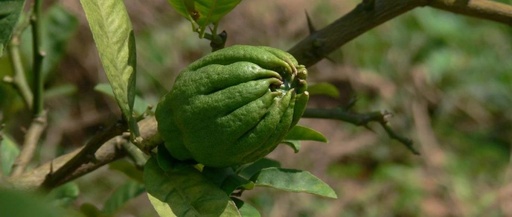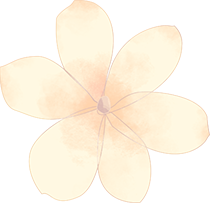
Today, we will introduce the Chinese herb Fo Shou (佛手), known for its unique yellow-green skin and distinctive appearance, resembling the hand of Guanyin with its split and open shape at the top.
Fo Shou has long been praised as “a rare gem among fruits, a wonder of the world”. It remains evergreen throughout the seasons, with an unusual fruit shape and a fragrant aroma. Legend has it that Su Shi, while serving as an official in Hangzhou, visited the northern foot of Jinhua in autumn to admire the Fo Shou, and was inspired to write: “Refreshing to the poetic heart, embraced by clear streams; the fragrance of the Buddha’s fruit wafts through winding paths, leading to tranquility.” This captures the ethereal and captivating fragrance of the Fo Shou fruit.
In traditional Chinese culture, Fo Shou is often depicted alongside pomegranates and peaches in decorative patterns, symbolizing “abundance of blessings, children, and longevity”. Wealthy families in ancient times would display Fo Shou in their homes, hoping for blessings and longevity for their family members.
Fo Shou not only has high ornamental value but also possesses precious medicinal and economic value. Both the fruit and flowers of Fo Shou are used medicinally, offering excellent health benefits and medicinal effects; its peel and leaves contain essential oils with a strong fresh fruit aroma, making them valuable for fragrance.
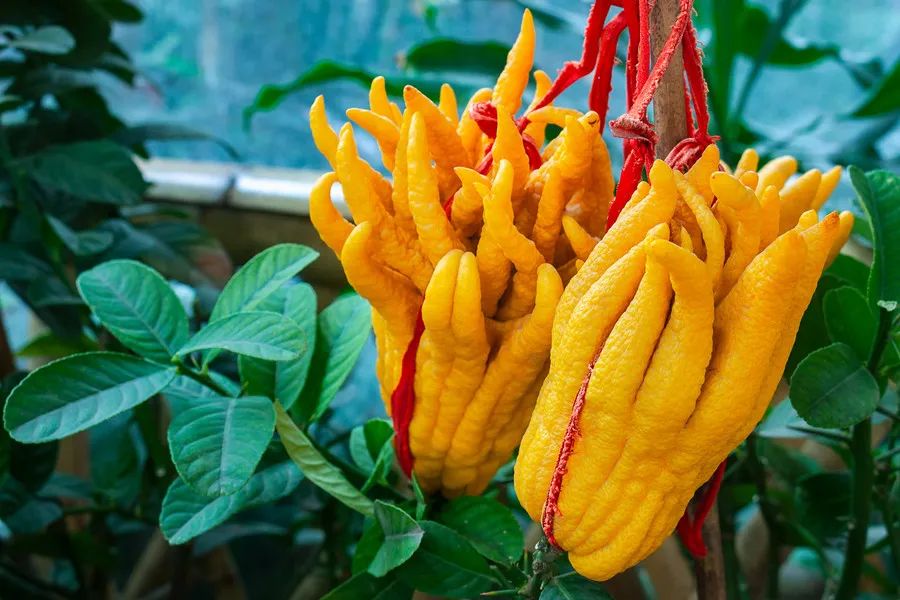
Fo Shou (佛手)
Source: This product is the dried fruit of the Rutaceae plant Fo Shou.
Origin:Fo Shou is originally from India and has a long history of medicinal use in China, widely cultivated in regions such as Guangxi, Guangdong, Sichuan, Yunnan, Fujian, and Zhejiang. Fo Shou from Guangdong and Guangxi is referred to as “Guang Fo Shou”, while that from Sichuan is called “Chuan Fo Shou”, and those from Zhejiang and Fujian are known as “Jin Fo Shou” and “Min Fo Shou”, respectively. Among these, Guang Fo Shou is a traditional and precious Chinese medicine, primarily produced in Deqing, Zhaoqing, Guangdong, and Guanyang, Guilin, Guangxi, and is one of the “Top Ten Guang Medicines” and “Top Ten Gui Medicines”.
Other Names:Fo Shou Gan, Fo Shou Xiang Yuan, Wu Zhi Gan, Gou Yuan, Mi Luo Gan, Fu Shou Gan, etc.
Taste and Properties:Pungent, bitter, sour, warm. Enters the liver, spleen, stomach, and lung meridians.
Functions and Indications:Regulates liver qi, harmonizes the stomach, alleviates pain, dries dampness, and transforms phlegm. Clinically, it is commonly used for liver and stomach qi stagnation, chest and flank distension and pain, stomach fullness, reduced appetite, vomiting, and excessive phlegm cough.
Precautions:Use with caution in those with yin deficiency and excess heat, and those without qi stagnation symptoms. Fo Shou is not suitable for individuals with yin deficiency and heat, and those without qi stagnation symptoms should use it cautiously. Individuals with weak constitutions should also consume it in moderation.
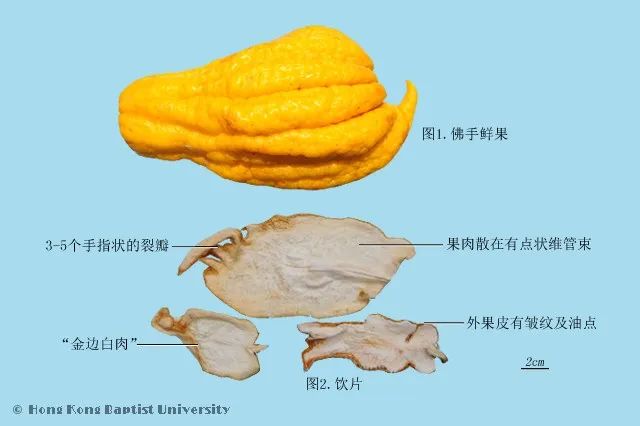
Every part of the Fo Shou is valuable; its roots, stems, leaves, flowers, and fruits can all be used medicinally.
The aromatic properties of Fo Shou can directly reach the liver and spleen, helping to relieve liver stagnation, promote qi flow, harmonize the spleen and stomach, and alleviate pain. Therefore, it is often used for symptoms of liver stagnation and qi stagnation, as well as disharmony between the liver and stomach. For liver stagnation and qi stagnation, with symptoms of chest tightness and flank pain, it can be combined with Xiang Fu (香附), Yu Jin (郁金), and Yan Hu Suo (延胡索) to regulate qi and relieve pain; if liver qi invades the stomach, causing flank distension, abdominal pain, and vomiting of sour fluids, it is advisable to combine it with Huang Lian (黄连), Wu Zhu Yu (吴茱萸), and Huo Xiang (藿香) to soothe the liver and harmonize the stomach; if there is spleen and stomach qi stagnation, with abdominal distension and pain, nausea, and reduced appetite, it can be combined with Mu Xiang (木香) and Zhi Ke (枳壳) to regulate qi and harmonize the stomach.
Regulating liver qi is one of the important effects of Fo Shou. Its sweet and sour taste has a significant regulating effect on liver qi stagnation, alleviating chest and rib distension or irritability, and can also help prevent and regulate insomnia. When needed, Fo Shou can be directly used to brew tea.
Fo Shou contains a large amount of volatile oils and some aromatic substances, as well as natural anti-inflammatory components, which can enhance spleen and stomach function, alleviate stomach pain, nausea, and bloating, and have a significant regulating effect.
Additionally, for individuals experiencing indigestion, Fo Shou can be used for treatment. It can be boiled with ginger and Chen Pi (陈皮) to make a decoction, which can significantly relieve symptoms of indigestion.
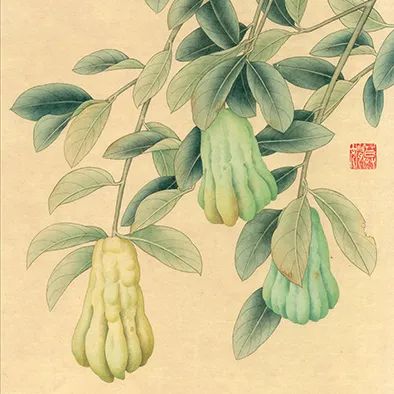
Modern Pharmacological Research
Modern pharmacological studies have found that the ethanol extract of Fo Shou can significantly inhibit intestinal smooth muscle, dilate coronary blood vessels, and increase coronary blood flow; high concentrations of the ethanol extract of Fo Shou can slow heart rate, inhibit myocardial contractility, protect against experimental myocardial ischemia, and lower blood pressure.
Vasodilation
Fo Shou contains various trace elements, which can help the body excrete sodium and dilate blood vessels, thereby lowering high blood pressure. Therefore, Fo Shou can be used in the treatment of hypertension, providing a good hypotensive effect.
Cough Relief and Asthma Control
Fo Shou can relieve cough and control asthma. It contains some natural limonene, which can promote bronchial contraction and eliminate bronchial inflammation, providing good regulation for cough and asthma.
Pain Relief
Substances extracted from Fo Shou can also have analgesic effects, improving sleep quality and reducing mortality caused by seizures, and providing good relief for pain caused by various diseases.
Heart Protection
The extract of Fo Shou can increase tolerance to hypoxia and enhance coronary blood flow, providing good improvement for myocardial ischemia and protecting the heart.
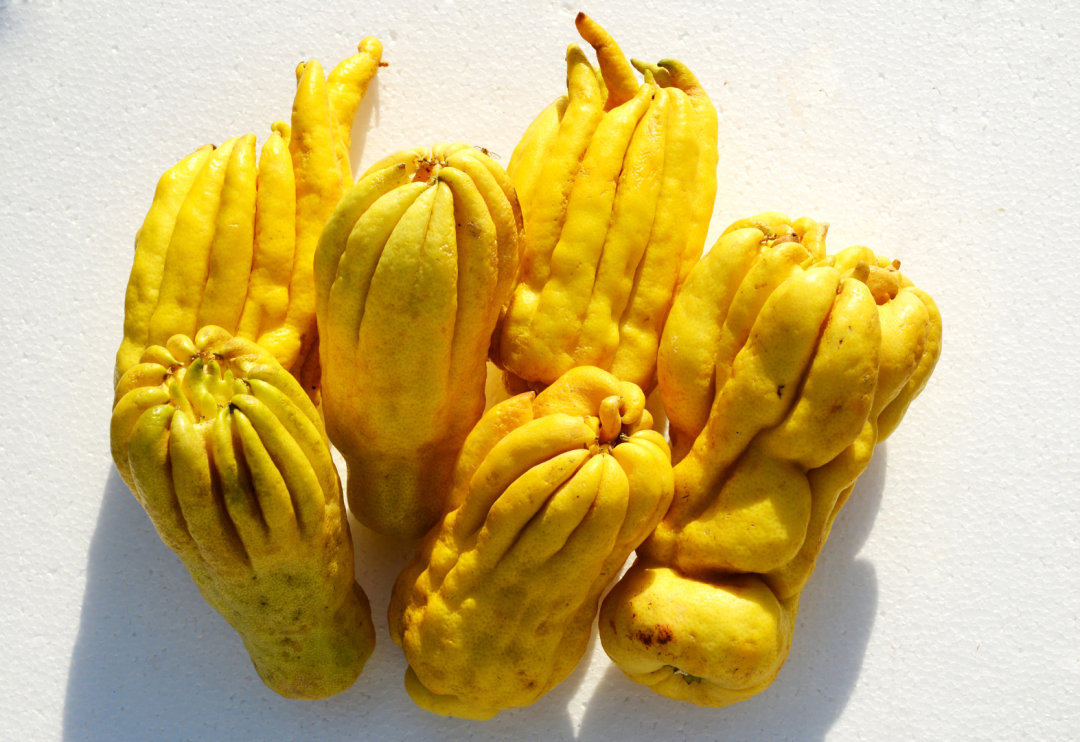
Historical Records of Fo Shou’s Efficacy
Throughout history, the efficacy of Fo Shou has been recorded in various herbal texts, such as:
“Dian Nan Ben Cao”: Nourishes the liver, warms the stomach, stops vomiting, eliminates cold phlegm, treats stomach pain, alleviates facial cold pain, harmonizes the middle and promotes qi.
“Ben Cao Gang Mu”: Fo Shou Gan, with a pungent and sour taste, is non-toxic; it enters the spleen, liver, and stomach meridians; it can be brewed in wine to treat phlegm and cough. Decoction can treat pain in the heart area.
“Ben Jing Feng Yuan”: Specifically breaks up stagnant qi. Treats post-diarrhea heaviness, using aged specimens.
“Ben Cao Bian Du”: Fo Shou Gan specializes in regulating qi and relieving the diaphragm.
“Ben Cao Zai Xin”: Treats qi stagnation in the liver, harmonizes the stomach, transforms phlegm, breaks up accumulations, treats choking and reverse stomach, and eliminates symptoms of lumps and nodules.
“Ben Cao Cong Xin”: Regulates the qi of the upper jiao and stops vomiting, promotes the intake of food and strengthens the spleen.
“Sui Xi Ju Yin Shi Pu”: Awakens the stomach, clears phlegm, dispels evil, relieves hangover, and stops pain.
“Zhong Yao Da Ci Dian”: Regulates qi, transforms phlegm. Treats stomach pain, flank distension, vomiting, choking, phlegm cough, and can also relieve hangovers.
Distinction Between Fo Shou and Fo Shou Gua
Fo Shou and Fo Shou Gua are not the same plant; many people confuse them or believe they are related.
Fo Shou is the fruit of the Rutaceae plant Fo Shou, a variant of the citrus grafting lineage, harvested in autumn when the fruit has not yet turned yellow or is yellow, sliced thinly, and dried or dehydrated at low temperatures to become the medicinal herb Fo Shou.
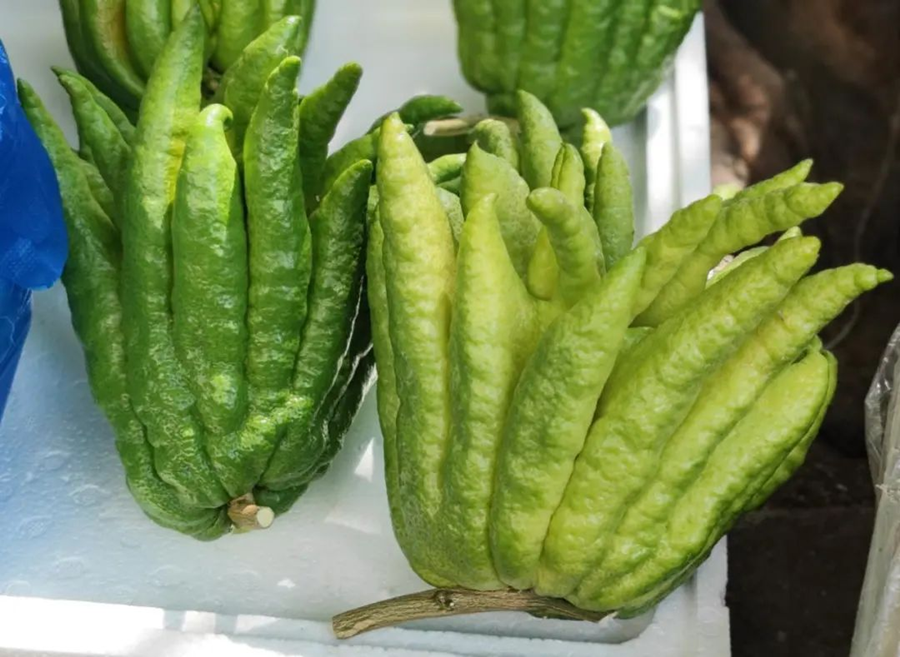
Fo Shou Gua is the fruit of the gourd family, a perennial herbaceous climbing plant. Although it resembles a fist, it does not develop into separate finger-like shapes and lacks the unique aroma characteristic of citrus plants in the Rutaceae family. People in Guangdong often use it to make soup, which is beneficial for strengthening the spleen and stimulating appetite.
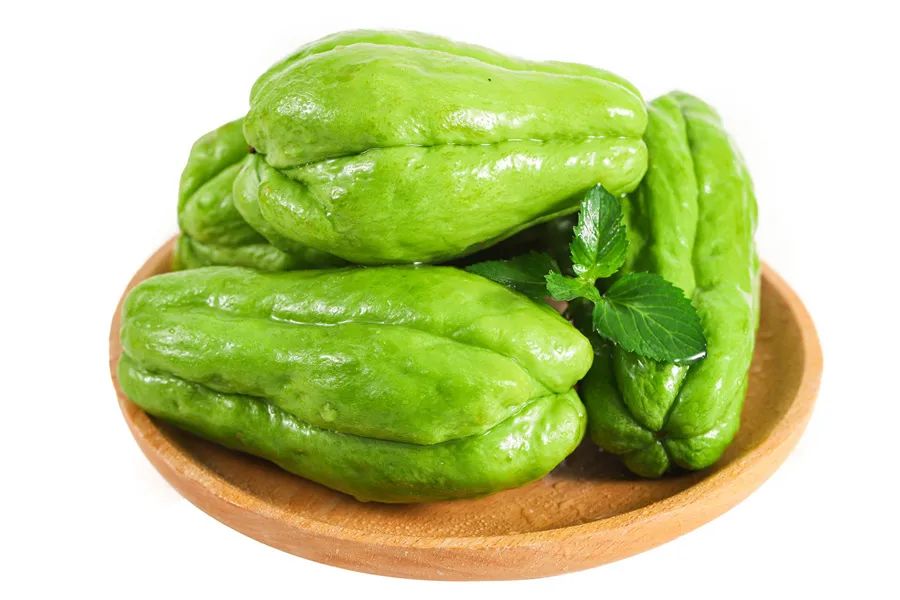
Fo Shou Culinary Medicinal Dishes
In the Qing Dynasty, “Hua Jing” recorded the method of consuming Fo Shou: “Fresh consumption is not as good as oranges; it is often sliced, dried, made into medicine, or candied, using its pulp mixed with sugar, or made into soup to relieve thirst.” This succinctly summarizes the essence of consuming Fo Shou.
Here are several Fo Shou medicinal dishes for your selection.
01Fo Shou and Snow Pear Honey Tea
Ingredients:15g Fo Shou, 1 snow pear, appropriate amount of honey.
Method:Remove the core from the snow pear, cut it into pieces, add Fo Shou, and pour in 1L of water, boil on high heat, then simmer for 20 minutes, turn off the heat and let cool, add honey.
Effects:Regulates liver qi, harmonizes the stomach, transforms phlegm. Suitable for liver and stomach qi stagnation, reduced appetite, vomiting, and excessive phlegm cough.
02Fo Shou and Rose Tea
Ingredients:10g Fo Shou, 5g rose petals.
Method:Soak both in boiling water to make a tea.
Effects:Drinking the infusion of Fo Shou and rose petals can achieve the effect of regulating liver qi, suitable for treating liver qi stagnation, chest and flank distension and pain, and reduced appetite.
03Fo Shou and Ginger Sugar Drink
Ingredients:10g Fo Shou, 10g fresh ginger, appropriate amount of brown sugar.
Method:Combine both with an appropriate amount of brown sugar, decoct in water; or soak in boiling water to make a tea.
Effects:Has the effects of regulating liver qi, strengthening the stomach, and stopping vomiting, suitable for treating abdominal distension and pain, reduced appetite, and vomiting due to liver and stomach qi stagnation.
04Fo Shou Congee
Ingredients:10g Fo Shou, 100g japonica rice, appropriate amount of rock sugar.
Method:Boil Fo Shou in 200ml of water until reduced to 100ml, strain, add 100g of japonica rice and appropriate amount of rock sugar, then add enough water to cook into a thin congee, consume twice daily while warm.
Effects:Regulates qi, alleviates pain, transforms phlegm, and stops vomiting. Suitable for stomach pain, flank distension, belching, vomiting, and phlegm cough, as well as infectious hepatitis.
05Gourd and Fo Shou Pig Liver Soup
Ingredients:150g pig liver, 20g gourd fibers, 10g each of he huan hua (合欢花) and hawthorn (山楂), 6g each of Fo Shou, chrysanthemum (菊花), and tangerine peel (橘皮), appropriate seasonings.
Method:Wash and slice the pig liver, soak the other ingredients in boiling water for 1 hour, strain to obtain the juice, add the liver slices, a little salt, and cooking wine, steam until cooked, then serve with a little sesame oil for flavor, one dose daily.
Effects:Has the effects of soothing the liver, unblocking meridians, and relieving depression. Suitable for treating menstrual pain in women.
Additionally, in the Chaoshan region of Guangdong, Fo Shou is often used as a raw material, undergoing processes of salting, drying, steaming, and soaking in medicinal powder, resulting in a product known as “Lao Xiang Huang” that is black and soft, widely used in folk medicine for its effects of eliminating accumulations, dispelling wind, stimulating appetite, and generating fluids. Lao Xiang Huang is a staple medicinal fruit in Chaoshan households, with a long shelf life and increasing efficacy over time.
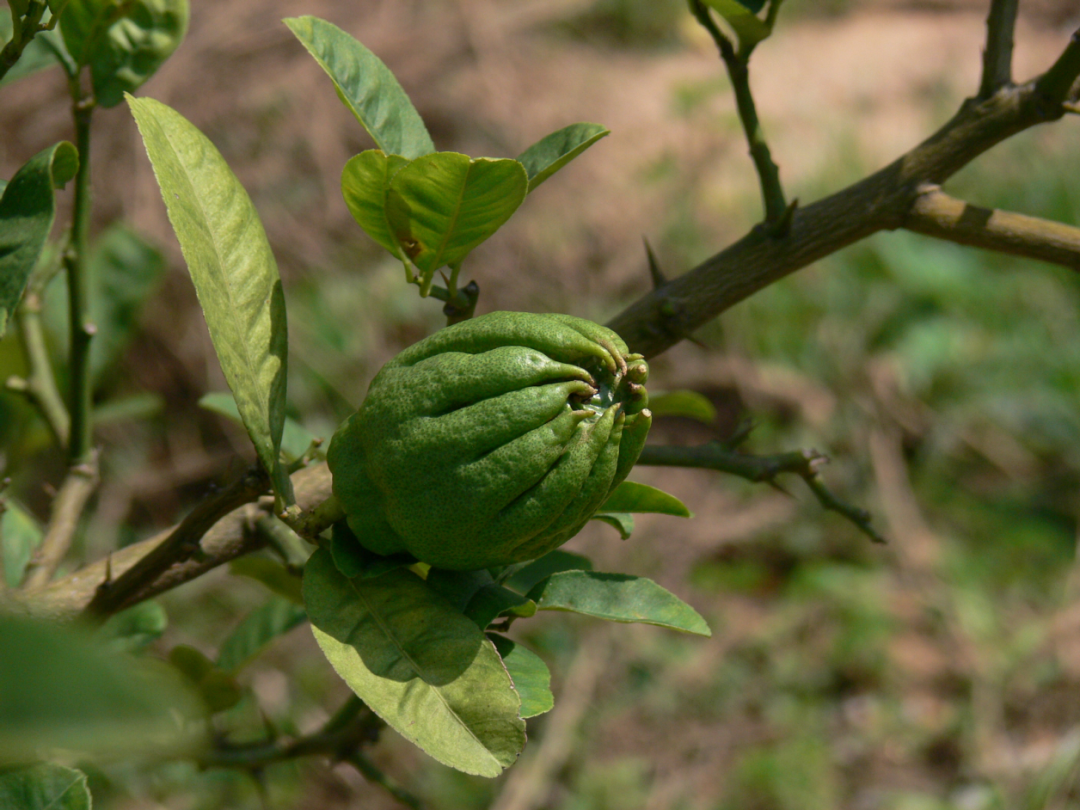
Legend and StoryAccording to legend, long ago, at the foot of a high mountain in Luodian, Jinhua, lived a mother and son. The mother, elderly and ill, often held her chest, feeling a sense of fullness and discomfort. The son insisted on taking his mother to seek treatment, but all efforts were in vain.One night, the son dreamed of a fairy who gifted him a fruit resembling a hand, which would cure his mother. Upon waking, he found his mother still unwell, so he resolved to find the fruit he had seen in his dream. After many days of climbing mountains and crossing rivers, while resting on a rock, he suddenly saw a celestial crane dancing and singing: “On Jinhua Mountain, there is a golden fruit, which can save your mother. Tomorrow night at the mountain gate, do not miss this great opportunity.”The next midnight, the son climbed to the mountain gate at the top of Jinhua Mountain, where he saw golden flowers everywhere. A beautiful woman appeared, and upon closer inspection, it was the fairy from his dream. The fairy said, “Your filial piety is touching; I will give you a heavenly orange that can cure your mother’s illness.” The son was immensely grateful and requested the fairy to also grant him a seedling of the heavenly orange, so his mother could smell its fragrance every day and be free from pain. The fairy granted his request.After returning, the son gave the heavenly orange to his mother, and her symptoms of fullness and discomfort quickly disappeared. The seedling was cultivated with care and soon spread throughout the village. The villagers believed that the fairy was the compassionate Guanyin, and the heavenly orange resembled Guanyin’s jade hand, thus it was named “Fo Shou”.■ [Source: This article is a comprehensive compilation from Qihuang Bencao, the First Affiliated Hospital of Guangzhou University of Chinese Medicine, the Pharmacy Department of Guangdong Provincial Hospital of Traditional Chinese Medicine, Jinhua Traditional Chinese Medicine Hospital, and the 20th edition of the “Chinese Pharmacopoeia”, with some images sourced from Huayang Traditional Chinese Medicine Studio WeChat.]
[Source: This article is a comprehensive compilation from Qihuang Bencao, the First Affiliated Hospital of Guangzhou University of Chinese Medicine, the Pharmacy Department of Guangdong Provincial Hospital of Traditional Chinese Medicine, Jinhua Traditional Chinese Medicine Hospital, and the 20th edition of the “Chinese Pharmacopoeia”, with some images sourced from Huayang Traditional Chinese Medicine Studio WeChat.]

